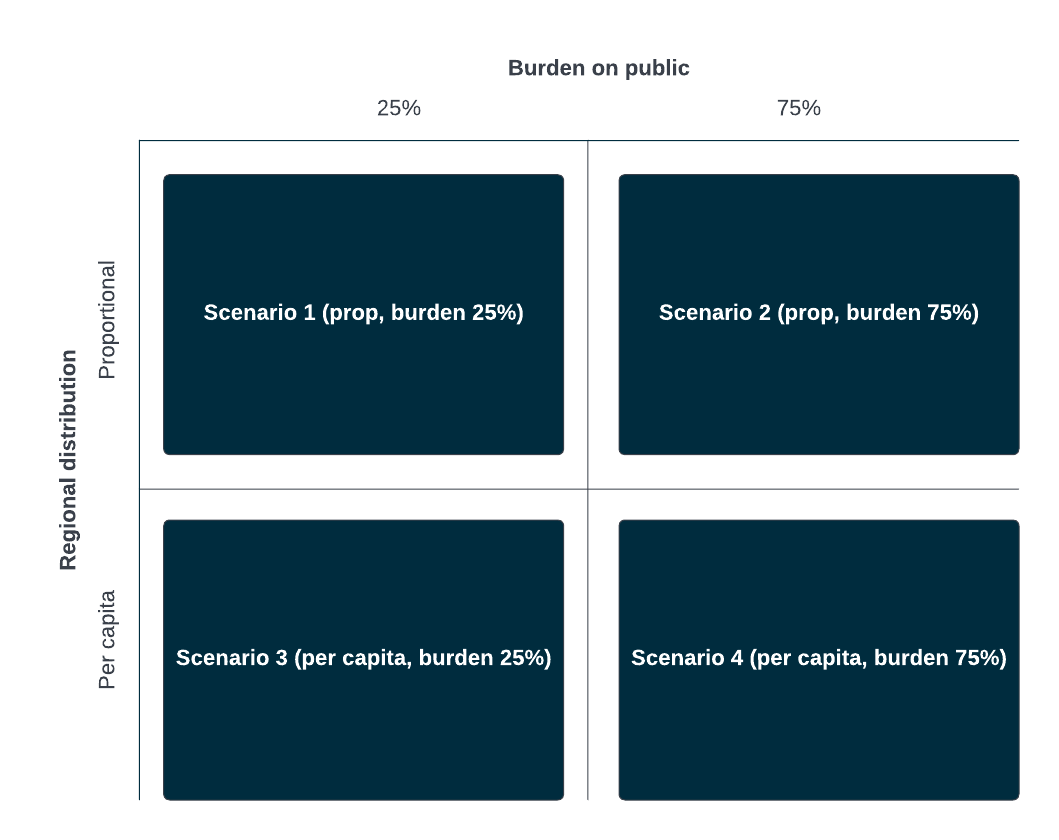We introduce new energy transition scenarios focusing on the distribution of the financial burden. The results suggest that even if different scenarios have the same target temperature limit, the outcomes for financial asset returns and interest rates can be very different, depending on the distribution of the costs of the energy transition.
In 2019 we introduced energy transition scenarios in Mira ABM – our strategic risk management, stress testing and scenario analysis platform. At the time, our focus was the frontier of achievable change and how the economy (and the underlying asset classes) would perform if all the industries and regions transitioned to low- (or no-) carbon technologies realistically available at the time or in the very near future.
In this issue of Risk Wire we introduce the new, expanded energy transition scenario set that focuses additionally on the required investments to achieve the well-publicised climate targets, but also elaborates on the distribution of effort and burden between regions, governments, consumers and industries – a granular analysis that can be meaningfully accomplished in Mira ABM. Our broad conclusions are:
- the distribution of transition burden has a major effect on the asset returns and interest rates even for the same level of target temperatures,
- irrespective of the regional distribution mechanism, EM equities will have major performance issues even if there is a per-capita adjustment of fossil fuel consumption targets; interest rates tend to be negatively affected in all scenarios
- depending on how much of the burden is passed on to the public, the energy transition is likely to exacerbate the trend of labour moving to lower productivity and lower income jobs, causing major social and economic tensions
The complete scenario options have been introduced in Mira ABM and subscribers may already carry out customised comparative analyses on their portfolios in Mira ABM or reach out to LINKS Analytics for help. In this report, we focus on the impact of four broad generic scenarios – all scenarios cover the +1.5 °C case, but with different regional distribution and public burden policy choices.


